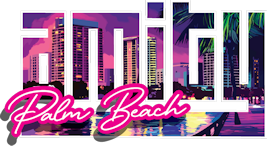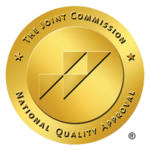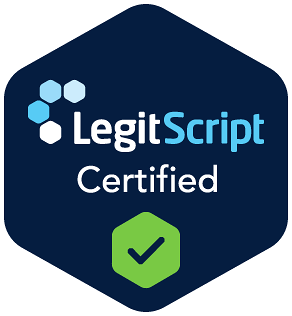Finding quality addiction treatment can feel overwhelming when facing thousands of options nationwide. The difference between mediocre and exceptional care often determines long-term recovery success.
We at Amity Palm Beach understand this challenge. That’s why we’ve researched the top 10 drug rehab centers in the US to help you make an informed decision about addiction treatment.
What Separates Great Rehab Centers from Average Ones
The statistics paint a stark reality: only 10% of Americans who need drug treatment actually receive it, according to the National Survey on Drug Use and Health. Among those who do enter treatment, success rates vary dramatically between facilities. The difference lies in three non-negotiable elements that separate exceptional centers from mediocre ones.
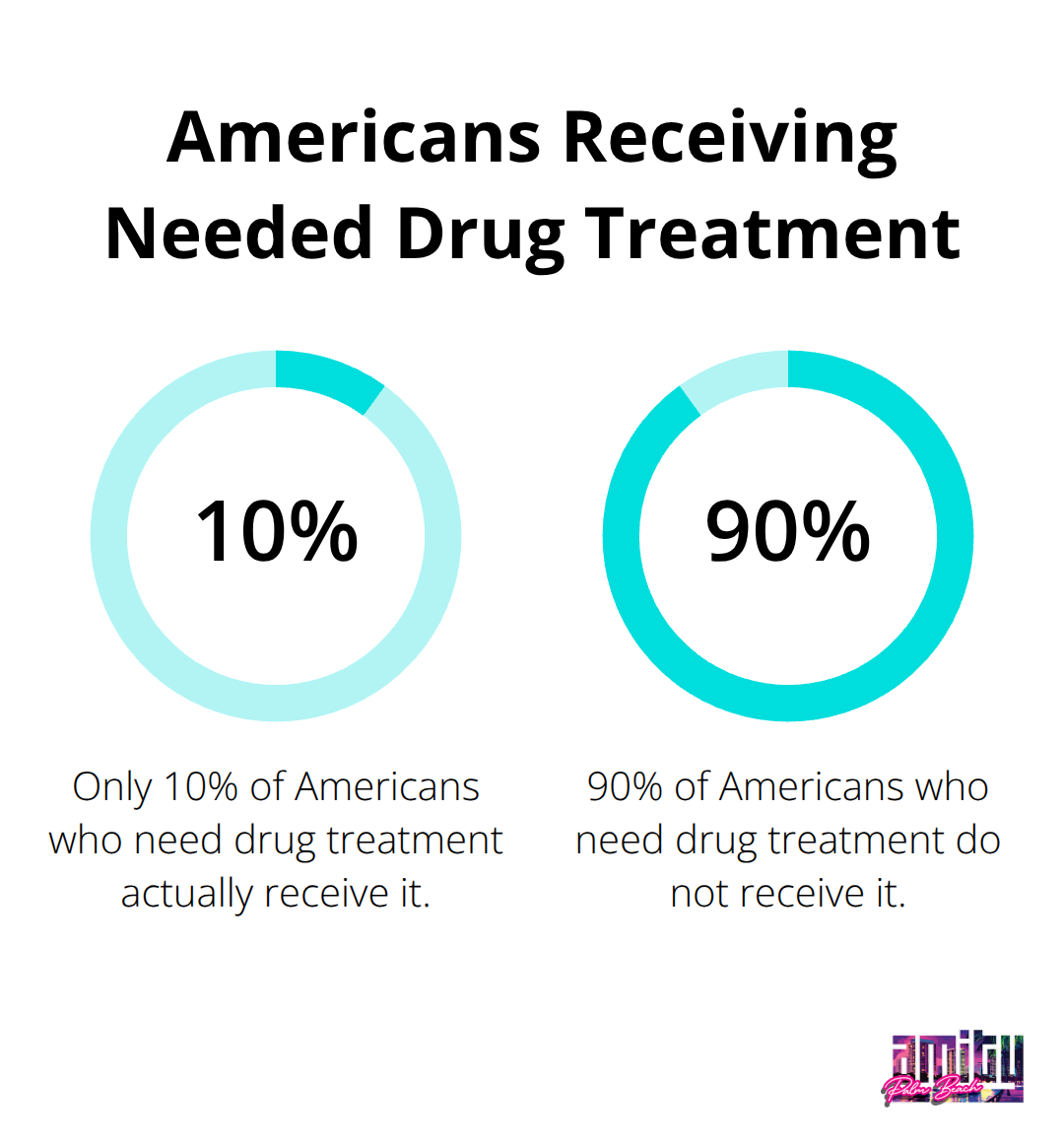
Evidence-Based Protocols Drive Real Results
Top-tier facilities base their approach on proven methodologies, not trendy theories. Cognitive Behavioral Therapy reduces relapse rates even after treatment ends, while Medication-Assisted Treatment doubles the likelihood of successful recovery according to the Journal of Substance Abuse Treatment. Hazelden Betty Ford Foundation reports a 78% abstinence rate one year post-treatment with their COR-12 program. The Mayo Clinic’s research-driven addiction services achieve 68% sustained sobriety rates at one year. These numbers don’t happen by accident-they result from facilities that prioritize clinical protocols over marketing promises.
Dual Diagnosis Treatment Addresses Root Causes
SAMHSA’s 2022 data reveals adults have co-occurring disorders, yet many facilities ignore underlying mental health conditions. Elite centers integrate psychiatric care directly into addiction treatment. Promises Treatment Centers’ trauma-informed approach reduced trauma symptoms for 72% of clients alongside addiction recovery. When anxiety, depression, or PTSD remain untreated, relapse becomes inevitable. The best facilities staff board-certified addiction specialists and licensed mental health clinicians who work as unified teams (not separate departments).
Low Patient-to-Staff Ratios Enable True Personalization
Generic treatment plans produce generic results. Leading centers maintain ratios that allow therapists to craft individualized protocols based on comprehensive assessments. CARF-accredited facilities report 37% higher compliance with quality standards and attract more experienced professionals. PAX Memphis Recovery Center emphasizes low resident-to-staff ratios for personalized support, while facilities with high ratios rely on group sessions and standardized approaches. The math is simple: more staff attention equals better outcomes.
These foundational elements create the framework for successful treatment, but implementation varies significantly across America’s top-rated facilities.
Which Centers Lead America in Addiction Treatment
Newsweek’s annual ranking of America’s Best Addiction Treatment Centers, compiled with global analytics firm Statista, recognized 400 inpatient and residential facilities across 25 states. These rankings reveal clear patterns among the nation’s elite treatment providers. Desert Hope Treatment Center has helped over 16,000 patients through comprehensive medical detox and educational therapies, while Northpoint Seattle maintains a 90% client recommendation rate with 75% who report sustained sobriety post-treatment. Taylor Made Retreat claims an 85% success rate through strict adherence to the Twelve-Step program combined with empathetic care protocols.
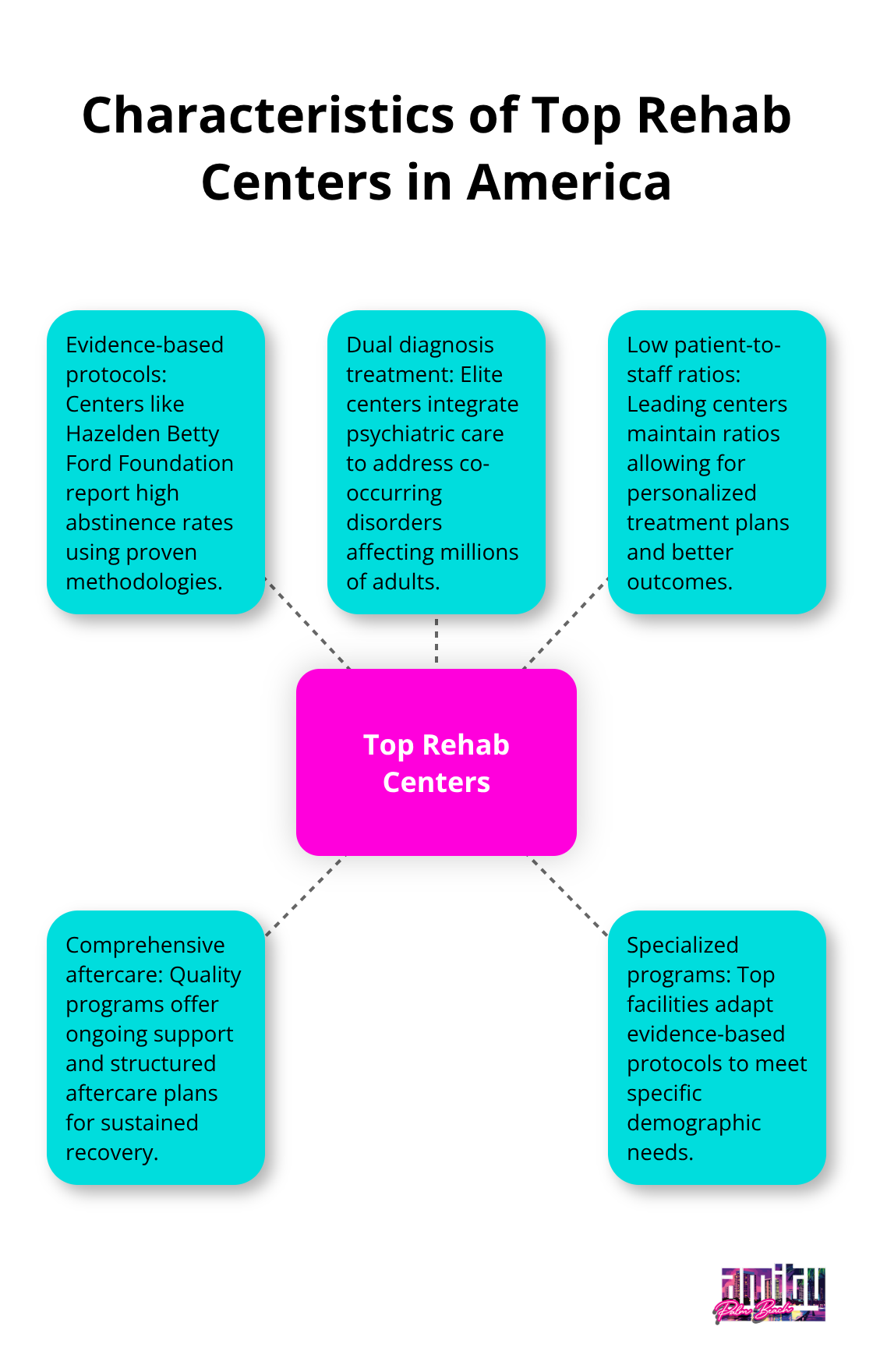
Premium Facilities Set Recovery Standards
Luxury residential centers command attention not through amenities but through outcomes. Caron Treatment Centers blend medical and spiritual recovery approaches, including specialized Neurofeedback programs that address brain chemistry imbalances. Their personalized care model produces measurable results where generic programs fail. Recovery Unplugged Tennessee provides comprehensive treatment for multiple substances while emphasizing extensive family-based therapy options (recognizing that addiction affects entire family systems). These facilities invest heavily in staff credentials and maintain the low patient-to-therapist ratios that enable true individualization.
Geographic Leaders Dominate Regional Markets
Regional powerhouses understand local demographics and cultural factors that influence treatment success. Northeast Addictions Treatment Center earned recognition for its structured, patient-centric approach and robust aftercare support systems. Lakeview Health operates separate facilities for men and women, creating gender-specific environments that address different recovery needs. MAT Recovery Centers specialize in medical-first approaches with Naltrexone therapy for alcohol use disorder, while Spectrum Healthcare focuses specifically on prescription painkiller addiction through medication-assisted treatment and individual therapy.
Specialized Programs Target Specific Populations
Elite centers recognize that one-size-fits-all approaches fail diverse populations. BrightWell Health addresses opioid and alcohol addiction alongside related mental health issues (understanding that 21.2 million adults have co-occurring disorders according to SAMHSA data). Behavioral Health Intervention Center specializes in services for DUI and DWI patients, providing targeted treatment options for legal system involvement. These specialized programs demonstrate how top facilities adapt evidence-based protocols to meet specific demographic needs rather than forcing patients into generic treatment models.
The success of these leading centers stems from their commitment to clinical excellence, but selecting the right facility requires careful evaluation of multiple factors beyond reputation alone. For those seeking comprehensive addiction treatment, understanding these distinctions becomes crucial in making informed decisions.
How to Choose the Right Rehab Center for Your Needs
The right treatment facility requires systematic evaluation of concrete factors that directly impact recovery outcomes. Start with detailed information about their clinical protocols. Ask specific questions: What percentage of their staff hold board certifications in addiction medicine? How many patients does each therapist manage simultaneously? Facilities with ratios that exceed 8:1 cannot provide individualized care regardless of their marketing claims.
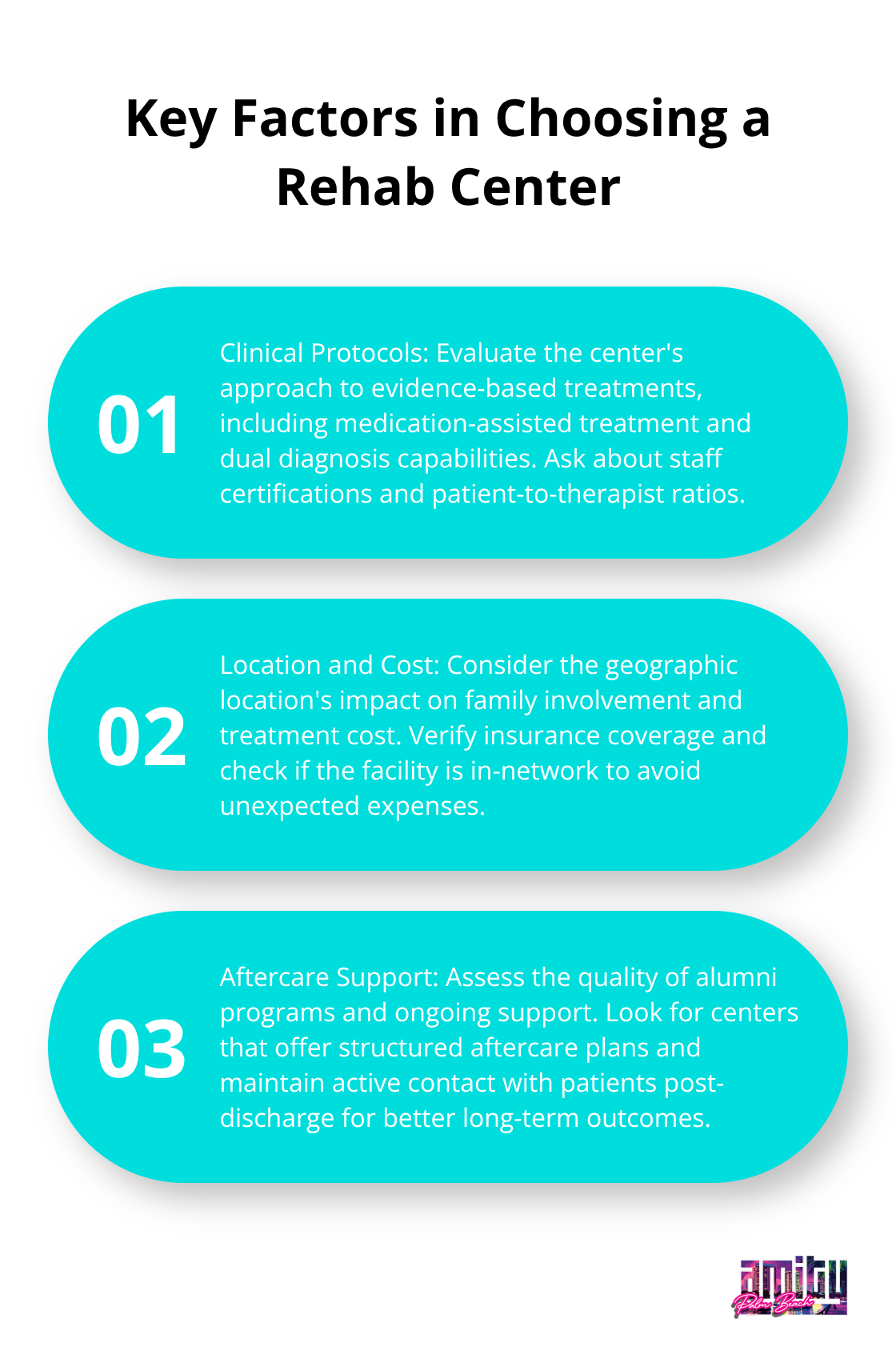
Evaluating Treatment Philosophy and Approach
The facility’s approach to medication-assisted treatment reveals their clinical sophistication. Progressive centers integrate FDA-approved medications like Naltrexone, Acamprosate, and Disulfiram into comprehensive protocols, while outdated facilities still stigmatize these proven interventions. Request their relapse rates at 6, 12, and 24 months post-discharge. Quality centers track these metrics religiously and share them transparently.
Examine their dual diagnosis capabilities thoroughly since 9.2 million adults have co-occurring disorders according to SAMHSA data. Centers that treat addiction separately from mental health issues set patients up for failure. The best facilities staff board-certified addiction specialists who work as unified teams rather than separate departments.
Considering Location, Cost, and Insurance Coverage
The average annual treatment cost reaches $1,583 per individual according to industry data, but geographic location dramatically affects pricing. Florida and California facilities often charge 40-60% more than comparable programs in other regions without superior outcomes. Verify your insurance coverage before you tour any facility, as many luxury centers operate outside network agreements to charge premium rates.
The Joint Commission reports that only 34.4% of mental health facilities meet their accreditation standards (making this certification a non-negotiable requirement). Geographic proximity affects family involvement, which research shows significantly enhances recovery outcomes when integrated properly into treatment protocols.
Assessing Aftercare and Alumni Support Programs
Alumni support programs separate successful centers from revolving-door facilities. Ask to speak with graduates who completed treatment 12-18 months ago. Quality treatment programs maintain active alumni networks and offer ongoing support groups, while mediocre facilities lose contact with patients immediately after discharge. The best centers provide structured aftercare plans that include sober living referrals and addiction treatment strategies tailored to individual needs.
Final Thoughts
Quality addiction treatment centers share three defining characteristics: evidence-based protocols that produce measurable outcomes, comprehensive dual diagnosis care for co-occurring mental health conditions, and low staff-to-patient ratios that enable true personalization. The top 10 drug rehab centers in the US consistently demonstrate these elements through transparent outcome reports and accreditation from respected organizations like The Joint Commission or CARF. The first step toward recovery requires courage, but the right facility demands careful research.
Staff credentials matter more than marketing promises when you evaluate potential treatment centers. Quality centers track relapse rates and share them openly with prospective patients and families. They integrate medication-assisted treatment into comprehensive protocols rather than rely on outdated approaches that stigmatize proven interventions.
We at Amity Palm Beach combine medical detoxification, residential treatment, and comprehensive dual diagnosis support to help individuals achieve lasting recovery. Professional help remains available through SAMHSA’s treatment locator, your insurance provider’s network directory, or direct consultation with treatment specialists. These resources guide you toward facilities that match your specific needs and circumstances (rather than generic programs that produce generic results).
